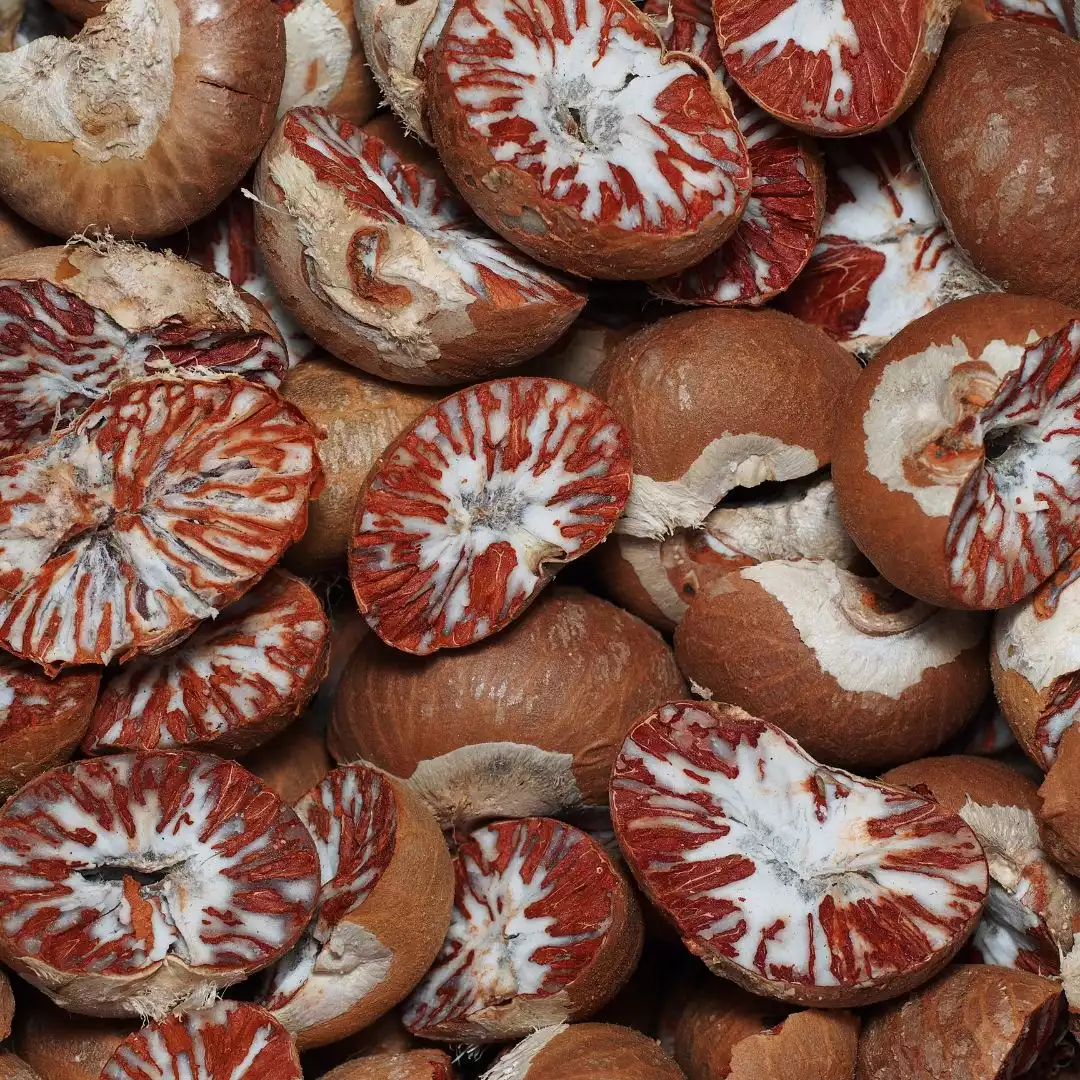Betel Nuts
Characteristics:
- Appearance: Hard seeds, usually brown in color, enclosed within a tough outer shell.
- Taste/Texture: Bitter to mildly bitter taste; the texture of the nut varies from firm to crunchy.
- Usage: Often chewed wrapped in betel leaves, combined with other ingredients like slaked lime, spices, or tobacco in some cultural practices.
Cultural Significance:
- Chewing Tradition: Commonly chewed for its stimulant effects and cultural significance in various communities across Asia and the Pacific.
Chemical Composition:
- Alkaloids: Contain arecoline, an alkaloid known for its stimulating effects.
- Tannins and Polyphenols: Present in the nut, contributing to its bitter taste.
Storage and Handling:
- Packaging: Typically sold as whole nuts in markets.
- Storage Conditions: Store in a cool, dry place away from direct sunlight to maintain freshness.
Description
Betel nuts are small, hard seeds found within the fruit of the Areca catechu palm. They are typically elliptical or oblong in shape, with a hard outer shell that needs to be cracked open to access the seed inside. The color of the nut varies from light brown to dark brown depending on the ripeness.
Health Considerations:
- Stimulant Properties: Betel nuts contain arecoline, a compound known for its stimulating effects similar to nicotine, contributing to increased heart rate and heightened alertness.
- Health Risks: Long-term use of betel nuts has been associated with potential health risks, including oral health issues, addiction, and increased risk of certain cancers.
Betel nuts have cultural significance and are often used for their stimulant effects, but their long-term usage has raised health concerns. They are traditionally chewed and play a role in certain cultural practices, but it’s important to be aware of their potential health risks when considering their use.





